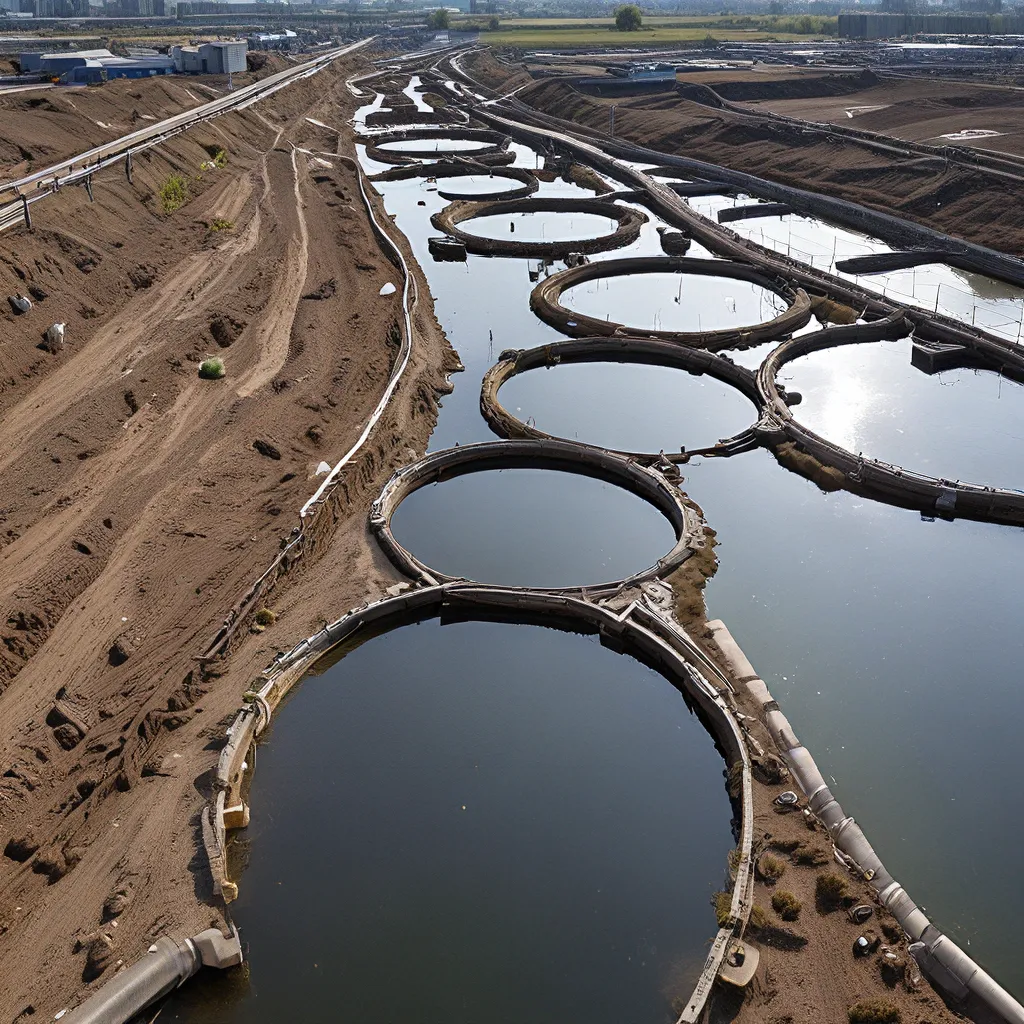
In the grand scheme of things, water is the very essence of life. It’s the lifeblood that sustains our ecosystems, nourishes our crops, and quenches our thirst. Yet, as our global population continues to grow and industries expand, the demand for this precious resource has skyrocketed, putting immense strain on our water systems. But what if I told you there’s a solution that not only conserves water but also transforms waste into valuable resources? Welcome to the world of wastewater treatment and the circular water economy.
Rethinking the Conventional Approach
For far too long, we’ve treated wastewater as a burden – something to be flushed away and forgotten. But the truth is, this liquid “waste” is teeming with untapped potential. It’s a goldmine of nutrients, energy, and even clean water, just waiting to be reclaimed and repurposed. That’s where the circular water economy comes into play.
Recent research has shown that by implementing advanced wastewater treatment technologies, we can not only purify and recycle water but also recover valuable resources like phosphorus, nitrogen, and even bioenergy. It’s a game-changing shift from the traditional linear “take-make-waste” model to a more sustainable, cyclical approach.
Imagine a world where your flushed toilet water doesn’t just disappear down the drain, but instead is transformed into clean, reusable water for your garden or even your household taps. Or a scenario where the nutrients in your wastewater are extracted and used as fertilizer to grow the very food you consume. It’s a future where waste is no longer waste, but a renewable resource – a true circular water economy.
The Power of Wastewater Treatment
At the heart of this circular water revolution lies wastewater treatment. These innovative facilities are the unsung heroes, quietly working behind the scenes to transform our liquid waste into a valuable commodity. But how exactly do they do it?
The process typically begins with primary treatment, where physical and chemical processes remove larger solids and debris from the wastewater. This is followed by secondary treatment, where microorganisms are used to break down organic matter and remove nutrients like nitrogen and phosphorus. Finally, the water undergoes tertiary treatment, where advanced technologies like membrane filtration or UV disinfection help to further purify the water, making it suitable for reuse or safe for discharge into the environment.
European Union legislation has been at the forefront of promoting sustainable water management, with directives like the Water Framework Directive and the Urban Wastewater Treatment Directive setting strict standards for water quality and wastewater treatment. These policies have driven the development of innovative technologies and encouraged a more holistic approach to water management.
Unlocking the Treasure Trove
But the benefits of wastewater treatment extend far beyond clean water. Emerging research has revealed that the byproducts of wastewater treatment can be a veritable treasure trove of valuable resources.
For example, the nutrient-rich sludge left over from the treatment process can be dried and used as a fertilizer, providing a sustainable alternative to energy-intensive and environmentally-damaging synthetic fertilizers. The biogas generated during the treatment process can also be captured and used to produce renewable energy, offsetting the facility’s energy consumption and reducing its carbon footprint.
But the innovation doesn’t stop there. Some wastewater treatment plants are even experimenting with the extraction of phosphorus and nitrogen from the wastewater, which can then be sold as valuable raw materials for the production of fertilizers, chemicals, and other industrial products. It’s a win-win situation – we get to recycle precious nutrients while reducing our reliance on finite and often unsustainable mineral sources.
The Circular Water Economy in Action
As exciting as all of this sounds, you might be wondering: “How can I, as an individual, contribute to this circular water revolution?” Well, the good news is that the transition to a circular water economy is already underway, and there are plenty of ways for you to get involved.
One of the most impactful things you can do is to support and utilize water reuse and recycling technologies. Look for water-efficient appliances and fixtures, and consider installing a greywater system in your home to recycle your sink, shower, and washing machine water for irrigation or toilet flushing. Alpha Wastewater is a great example of a company that specializes in providing innovative wastewater treatment solutions for both residential and commercial customers.
But the circular water economy isn’t just about individual actions – it requires a concerted effort from governments, industry, and the wider community. Advocating for sustainable water policies, supporting water infrastructure investments, and educating others about the importance of water conservation and resource recovery can all play a crucial role in driving this transition.
The Future is Circular
As I reflect on the remarkable potential of wastewater treatment and the circular water economy, I can’t help but feel a sense of excitement and optimism. This is more than just a technological revolution – it’s a fundamental shift in the way we view and value our most precious resource: water.
By embracing the circular model, we can not only protect our water sources and reduce our environmental footprint but also unlock a treasure trove of valuable resources that have been hiding in plain sight. It’s a future where waste is no longer waste, but a renewable and valuable commodity – a future where we can truly close the loop and create a more sustainable, resilient, and prosperous world.
So, let’s roll up our sleeves and get to work. The circular water economy is within our grasp, and the time to act is now. Who knows what other wonders we might uncover as we delve deeper into the world of wastewater treatment and the promise of a truly circular future?